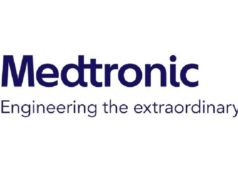
Southeast Pain Care is one of the first facilities in North Carolina, USA, to use a new neurostimulation device designed to relieve the sensation of pain in patients suffering from chronic intractable pain. The Axium Neurostimulator System (St Jude Medical) for dorsal root ganglion (DRG) stimulation, was first used to support a 42-year-old patient suffering from complex regional pain syndrome (CRPS) in her left leg.
According to a release, DRG stimulation with the Axium system has been shown to be particularly effective for treating pain in areas such as the groin, lower leg and feet. The Axium system is approved for use in the US, Europe and Australia.
Troy Gingerich, an anaesthesiologist at Southeast Pain Care in Charlotte, USA implanted the Axium system, because the patient was experiencing excruciating pain that affected her ability to perform day-to-day activities.
“After implanting the device, the patient’s pain symptoms had disappeared as well as the physical symptoms associated with CRPS, such as redness and swelling,” said Gingerich. “As a physician, it is very gratifying to know that patients are getting the relief they need with visible results.”
Gingerich is one of three physicians in North Carolina trained to perform the procedure, and the only one in the Charlotte area to have implanted the device. Unlike traditional neurostimulation devices, the Axium system targets the DRG, a spinal structure densely populated with sensory nerves that transmit information to the brain via the spinal cord. This first-of-its-kind device delivers a form of spinal stimulation that can target the specific areas of the body where pain occurs. Patients suffering from chronic lower limb pain associated with CRPS who have previously tried multiple treatment options without receiving adequate pain relief.
According to the Institute of Medicine, chronic pain affects more than 100 million Americans, an incidence rate which outpaces heart disease, cancer and diabetes combined. Research suggests that, in total, the condition costs the American population an estimated 515 million workdays annually and generates upwards of 40 million visits to physicians each year.













